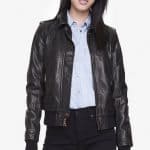Slow Fashion Movement: Leave Fast-Fashion Behind
 Fashion is continually evolving because of changes in trends and advances in production technologies. Many women try to keep up with the momentum, resulting in a concept called’fast-fashion.’ Garments constructed for fast-fashion are usually lower quality but of-the-moment, designed to be worn for one season.
Fashion is continually evolving because of changes in trends and advances in production technologies. Many women try to keep up with the momentum, resulting in a concept called’fast-fashion.’ Garments constructed for fast-fashion are usually lower quality but of-the-moment, designed to be worn for one season.
Slow Fashion for Wise Fashionistas
Wise fashionistas know to select clothes that will last for many seasons, although to not look towards what is trendy. Slow fashion garments are usually made from materials and have a tendency to meet with regulation guidelines, ensuring.

The Slow Fashion Movement is an alternate to semi automatic, disposable clothing. The term”Slow Fashion” was initially coined in 2007 from Kate Fletcher, and the movement is based on the very same flaws of the Slow Food Movement. Produce garments quickly and this impacts the environment.
The impacts come from the flow of natural resources required to produce garments rapidly. Fossil fuels are depleted, ecosystems are damaged.The society and environment as a whole are in danger as long this intense consumption of non-replaceable resources proceeds.

As the quality garments last only a few months on average, Speedy fashion also greatly contributes to cloth waste. Earth Easy estimates nearly 12 million tons of textile waste is produced every year in North America. This equates to about 68 pounds. Of waste per family.
Cleaner Closets for the Environment
The Slow Fashion Movement concentrates on a cleaner cupboard, meaning less clothing. On the other hand, the select pieces will probably be of greener materials that you are able to be about sporting excited. This can be in comparison to impulse buys, which can leave your closet bloated with clothes that don’t last.
Slow fashion bits are designed with longevity in mind. These pieces are bound to outlast any garments by leaps and bounds Even though the garments may be more expensive initially.
In general, Slow Fashion is about consuming but gaining quality. Consider it — would you rather open your cupboard to dozens of clothes which are stretched out, worn, and”after” trendy? Or build a wardrobe of pick items which are picked to complement design tastes, lifestyle, and your own figure, and exceptional, superb quality?

Before you buy another garment, think about how it was fabricated, what it’s made of, and how long it will last before it goes out of fashion or loses its elasticity, color, or shape. Preferably garments made from natural materials, purchasing higher-end clothes, is the best bet for a wardrobe that includes stylish, yet ageless garments.






The Ones to Watch: 5 Must-Buy Fashion Labels on Amazon